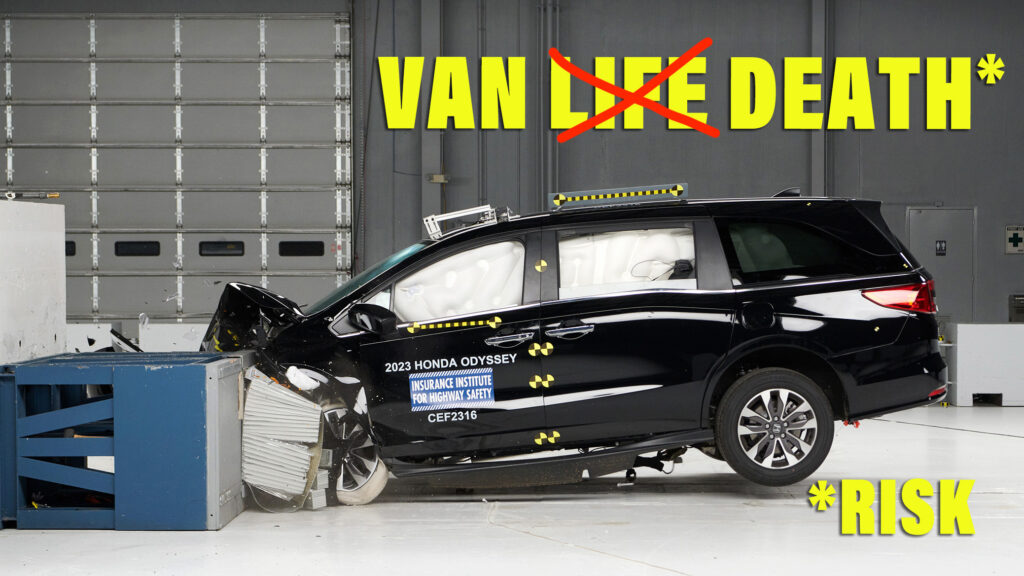Chrysler Pacifica, Kia Carnival and Toyota Sienna all failed to achieve ‘good’ rating for back seat safety, while Honda Odyssey was rated ‘poor’
1 hour ago
 –>
–> 
–>
No class of vehicle is designed with a stronger focus on hauling families than the minivan. So you might assume those boxy carry-alls would be pulling out all the stops when it comes to safety. Not so, says the Insurance Institute for Highway Safety, which recently tested four of the most popular minivans and came up with some worrying results.
The overlap front crash test now emphasizes safety for rear-seat passengers, after the IIHS discovered that the risk of a fatal injury is now higher for belted occupants in the second row than for those in front due to improvements in front-seat safety. But the Chrysler Pacifica, Kia Carnival, and Toyota Sienna all failed to achieve ‘good’ ratings for back seat safety in the test, instead being ranked as ‘marginal,’ and the Honda Odyssey was awarded a ‘poor’ rating.
To carry out the test the IIHS’s engineers place a dummy the size of a 12-year-old child in the rear seat and ram the vehicle into a stationary block. Earning the ‘good’ rating that eluded all four minivans means the dummy has to survive the impact without suffering injuries to the head, neck, chest or thigh. It also has to remain in the correct position and not ‘submarine’ under the seatbelt, and the dummy’s head has to maintain a safe distance from the seatback in front of it.
advertisement scroll to continue
Opinion: The Minivan Comeback Makes Total Sense
[embedded content]
While all four minivans offered good protection for the front-seat occupants, those in the back were all vulnerable to chest injuries resulting from excessive belt forces or badly positioned belts. Only the Sienna came with seatbelt pretensioners and force limiters, but that advantage was nixed when the dummy slid under the lap belt and the shoulder belt slipped toward its neck.
Both of the other two ‘marginal’ vans, the Carnival and Pacifica, lacked limiters and transferred too much force to the dummy’s chest, while the Chrysler’s curtain airbag also failed to trigger. Of the three, the Kia was judged more likely to cause a head or neck injury, but not as likely as the Honda Odyssey. Its dummy endured the highest head and neck forces and its head was also allowed to come too close to the front seatback.

 <!–
<!– –>
–>